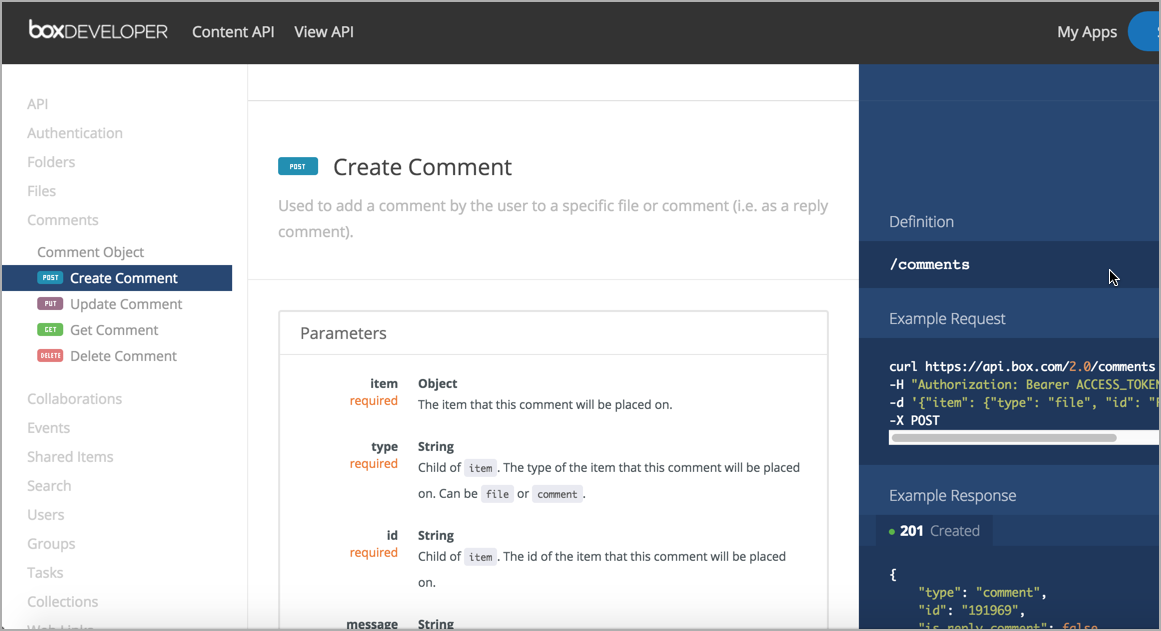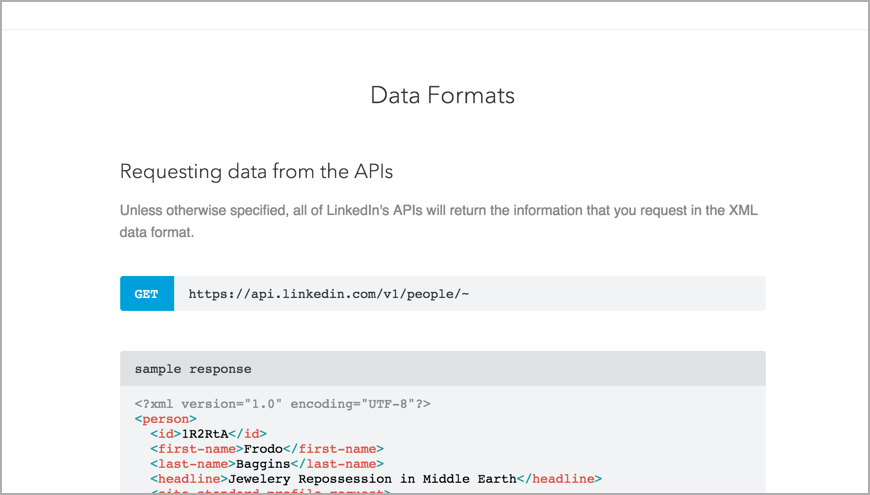Documenting the endpoints and methods
Terminology for endpoints varies
Now let's document the endpoints. When you list the endpoints, the term you use to describe this section also varies. Here are some terms you might see:
- Requests
- Endpoints
- API methods
- Resource URLs
- URLs
- URL syntax
My preferred term is "endpoint."
The endpoint definition usually contains the end path only
When you describe the endpoint, it's common to list the end path only (hence the nickname "endpoint").
In our example, the endpoint/endpath is just /surfreport/{beachId}. You don't have to list the full URL every time (which would be https://simple-weather.p.mashape.com/surfreport{beachId}. Doing so distracts the user from focusing on the path that matters.
In your user guide, explain the full code path in an introductory section.
Represent path parameters with curly braces
If you have path parameters in your endpoint, represent them through curly braces. For example, here's an example from Mailchimp's API:
/campaigns/{campaign_id}/actions/send
Better yet, put the path parameter in another color to set it off:
/campaigns/{campaign_id}/actions/send
If you set off your code block with pre tags, you can use span tags to set off specific elements in different colors.
Curly braces are a convention that users will understand. In the above example, almost no URL uses curly braces in the syntax, so the {campaign_id} is an obvious placeholder.
Another convention it to represent parameter values with a colon, like this:
/campaigns/:campaign_id/actions/send
You can see this convention in the EventBrite API and the Aeris Weather API.
In general, if the placeholder name is ambiguous as to whether it's a placeholder or something you're supposed to customize with an actual value, clarify it.
You can list the method beside the endpoint
It's common to list the method (GET, POST, PUT, DELETE) next to the endpoint. Since there's not much to say about the method itself, it makes sense to group the method with the endpoint. Here's an example from Box's API:
And here's an example from Linkedin's API:
Sometimes the method is referred to as the "verb." GET, PUT, POST, and DELETE are all verbs or actions, after all.
Your turn to try: Write the endpoint definition for surfreport
List out the endpoint definition and method for the surfreport/{beachId} endpoint.
Here's my approach:
Endpoint definition
GETsurfreport/{beachId}
If you had different endpoints for the same resource, you might have more to say here. But with this example, the bulk of the description is with the resource.

